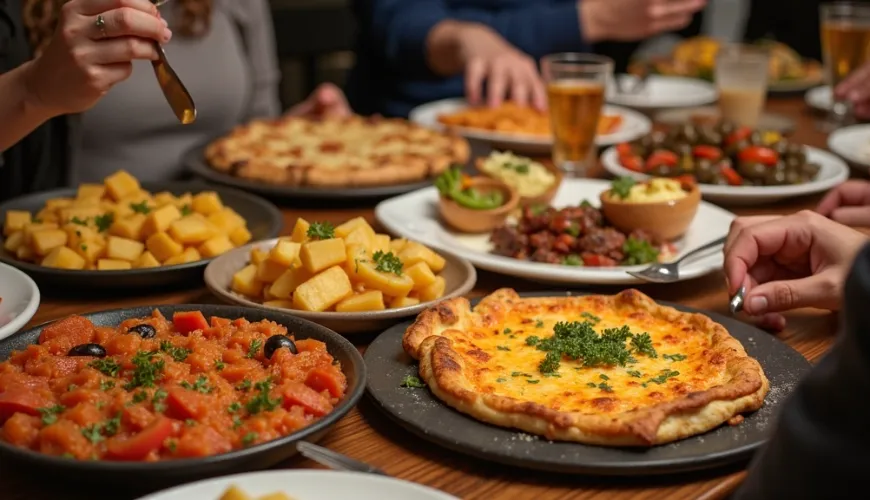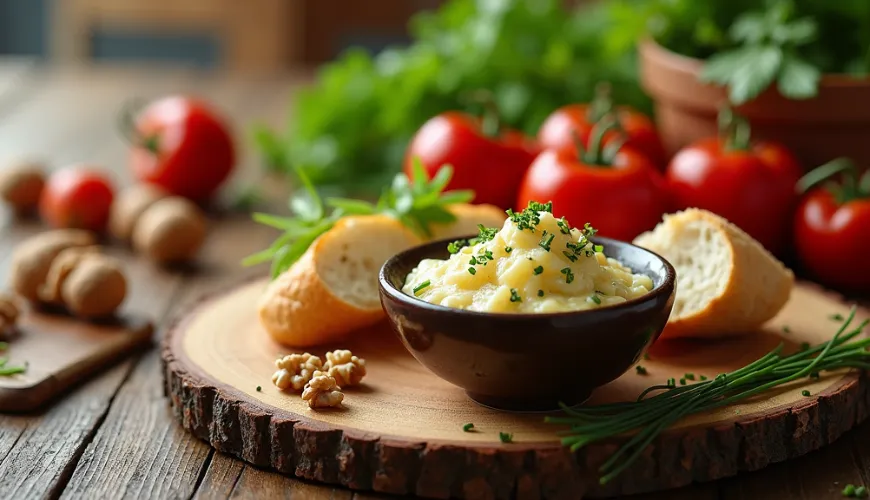
Types of Tapas That Will Bring You Closer to the Spanish Lifestyle

Spanish Tapas - Small Delights with Big Character
When you say tapas, most people envision Spanish bars with a lively, friendly atmosphere, a glass of wine or vermouth in one hand, and a small plate of treats in the other. Tapas are not just food – they symbolize social life, the joy of sitting with friends, and celebrating simple yet delicious ingredients. In recent years, the concept of tapas has spread beyond the borders of Spain, and today you can enjoy them practically anywhere in the world. But do you know what types of tapas actually exist?
The origin of tapas is shrouded in legend. One story tells of Spanish King Alfonso X, who wisely decreed that a small snack must be served with wine to prevent excessive drunkenness. Another version claims that the word tapa (Spanish for "lid") comes from the time when wine glasses were covered with a piece of bread or ham to keep out dust or insects. Whatever the truth may be, one thing is certain – tapas have become an integral part of Spanish culture.
Traditional Types of Tapas Everyone Should Know
In Spain, tapas vary not only by region but also by time of day and seasonality. However, there are some classic types of tapas that can be found in almost every bar from Barcelona to Seville. These include famous olives, cheeses, cured hams, or pickled fish. These simple snacks often serve as an appetizer to something larger, but they can often become a full-fledged dinner.
One of the most popular tapas is patatas bravas – crispy cubes of roasted potatoes, topped with a spicy tomato sauce. Each establishment has its own recipe, so the taste can range from slightly sweet to quite spicy. Another icon is tortilla española, a Spanish omelet made from eggs, potatoes, and onions. Simple, hearty, and served warm or cold.
Equally popular are croquetas, crispy croquettes filled with béchamel cream and various ingredients – most commonly serrano ham, cheese, or chicken. And how about albóndigas, small meatballs in tomato or almond sauce? These tapas are especially popular during the colder months.
For seafood lovers, there's gambas al ajillo – shrimp quickly sautéed in olive oil with garlic and fresh chili. Simple, aromatic, and incredibly tasty. In the Galician region, there's the traditional pulpo a la gallega, octopus served on sliced potatoes with paprika and sea salt.
Regional Variations - Every Area Has Its Specialties
One reason tapas are so fascinating is their diversity. Each Spanish region brings something unique to this tradition. Andalusia, considered the birthplace of tapas, offers light and refreshing treats – such as salmorejo, a cold tomato soup from Córdoba, or berenjenas con miel, fried eggplants with honey.
In the Basque Country, tapas are often called pintxos – small snacks, often skewered with a toothpick, holding together several layers of flavors. It can be a combination of cheese, anchovies, peppers, and olives, or even a mini hamburger served on a piece of bread. In the city of San Sebastián, you'll find pintxos displayed on the bar, and guests help themselves to whatever they fancy – the bill is then calculated based on the number of toothpicks.
In Catalonia, tapas are more commonly associated with pa amb tomàquet – a slice of bread rubbed with garlic, fresh tomato, and olive oil. This simple bread is then complemented by other treats, such as jamón ibérico or local sheep cheese.
Interestingly, in some cities, especially in Granada, you get tapas for free with an ordered drink – the more you order, the bigger and more substantial the trays they bring you.
Tapas as a Lifestyle – and Inspiration for Czech Tables
But tapas aren't just about food. They're about sharing, slowing down, and taking the time to sit, chat, and taste different flavors. This style of dining feels very natural – instead of one large portion, several smaller dishes are served, which people share among themselves. The result is an experience full of diversity, both in flavors and in company.
An example might be a family celebration in a small village near Malaga. The table features a bowl of olives marinated with orange zest, a plate of slices of cured ham and cheese, alongside tortilla cut into squares, and a small bowl of tuna salad. Grandma pours homemade wine, the children snack on octopus, and everyone laughs and chats. No one is in a hurry – tapas are not a race but an opportunity to be together.
And it's precisely this spirit of sharing and relaxation that we can bring into our daily lives as well. Tapas are not bound by rules – feel free to create your own versions. Small bowls of hummus, roasted vegetables, marinated mushrooms, or even homemade pickled peppers can create a colorful feast for friends and family.
Healthier versions of tapas are also perfect for those who strive to eat sustainably and thoughtfully. Instead of meat, you can use legumes, local vegetables, or fermented products. And if you prefer a bio or zero waste approach, tapas are ideal – they are made from smaller quantities of ingredients, often from what you already have at home, thereby minimizing waste.
As the famous Spanish chef Ferran Adrià says: “Tapas aren't about recipes – they're about an approach." And that's something we can all agree on. Tapas combine creativity, hospitality, and the joy of shared food.
Tips for Homemade Tapas Anyone Can Handle
If you decide to host your own tapas evening, you don't have to stick to traditional recipes. What's important is that the food is tasty, easily served, and ideally also decorates the table. Here are a few tips that can serve as inspiration:
- Marinated olives with herbs and garlic – just a few hours in olive oil with rosemary and lemon zest
- Mini skewers of cherry tomatoes, mozzarella, and basil – a Czech-Italian fusion in one bite
- Roasted sweet potatoes with tahini and sesame – a great vegan alternative
- Grilled tempeh with tamari sauce – a fermented soy product as a healthier meat substitute
- Homemade hummus with roasted pepper – light, nutritious, and colorful
When serving, don't skimp on colorful dishes, wooden boards, or bowls of various sizes. The visual aspect also plays an important role.
Tapas are not just a meal – they are a way of life, centered on sharing, diversity, and the joy of flavors. Whether you choose classic patatas bravas or prepare your own vegetable variations at home, it's always an experience that brings people together. Perhaps that's why tapas are finding their way into Czech kitchens – as a symbol of natural enjoyment, slowness, and a communal table.

